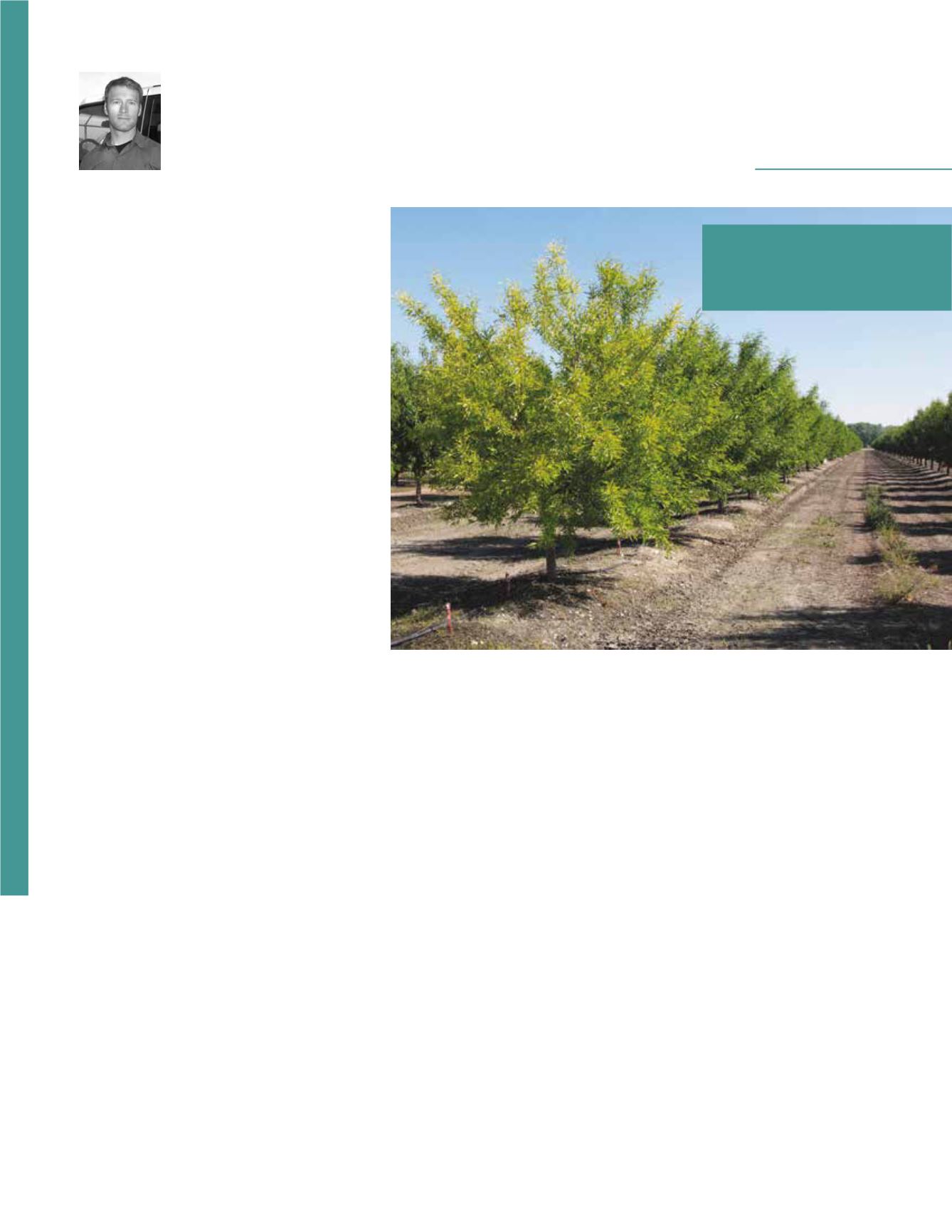
TIME TO CONSIDER
Time To Consider
DAVID DOLL, UCCE Nut Crop Pomology Farm Advisor, Merced County
40
Almond Facts
MARCH | APRIL 2017
The spring time months of
March and April present many
challenges in managing almonds.
Irrigation, nutrient applications,
disease management, and weed
and insect control begin during
this period and are critical for
developing a successful crop.
Irrigation Timing/
Saturated Soils
In many operations, water is over-
applied in the spring. This is due to the
occurrence of rains, variable ranges of
wetted soil profiles, weather conditions,
and general lack of understanding of
how much water trees utilize at this
period. Prior to the first irrigation, it
is best to make sure the soil profile is
beginning to dry before applying water.
This can be determined with the use
of a shovel or auger, pressure chamber, or soil moisture
sensors. If using the pressure chamber, irrigation should
be considered if trees are 1.5-2 bars more negative
than baseline. As an example, last year (2016) in a local
research plot, we applied the first irrigation on April 29
when stem water potential readings reached 1.5 bars more
negative than baseline. By that time, the neighboring
blocks were irrigated three times. We estimated that the
grower saved $15 per acre in a reduction in pump and
water costs. The late rains of 2016 provided the water
needed by the trees. Although this is not typical of every
year, it illustrates the point of monitoring tree or soil water
status in determining when to irrigate.
Over-irrigation in the spring can negatively impact tree
performance. Annually, several calls regarding poor tree
growth and “pale trees” are received. This is often due to
saturated soils. Too wet of soils reduces the movement of
oxygen into the soil, killing fine feeder roots. This impacts
the ability for the tree to uptake water and nutrients,
leading to micro-nutrient deficiencies, impacting nut set
and tree growth. Later-season effects are also observed
and include a limited rootzone, leading to severe water
stress during hull-split and harvest. The problem is often
compounded by fertigation or chemigation in attempts to
manage the symptoms.
Spring-Time Nitrogen
Management
New nitrogen regulations require a crop estimate to
determine the seasonal amount of nitrogen to apply.
Crop removal studies have indicated that around 65 lbs
of nitrogen are removed with every 1,000 kernel pounds
of harvest. Taking into account nitrogen application
inefficiencies, 85 lbs of nitrogen must be applied to replace
the removed amount. Further research has indicated that
multiple applications of nitrogen should be made through
the season with 80 percent of the total budget being
applied prior to kernel fill and the remaining 20 percent
applied in the early postharvest period.
The rate of spring fertilizer applications should be split
to reduce the potential of plant toxicity and leaching
from spring rains or over-irrigation. In coarser or soils
Too wet of soils can kill fine feeder
roots, which leads to the expression
of nutrient deficiencies and a yellow
color. Before applying fertilizer,
check to see if the soil is too wet.


